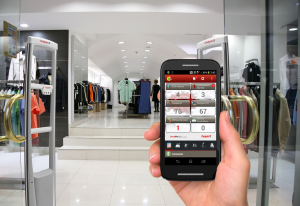 With January the last month fiscal month for plenty of retailers, we can all look forward to *drum roll* INVENTORIES!! Wait, am I the only one excited to count millions of pieces of merchandise in a single night? I’ve always been the odd-ball in my department I guess. Inventory is a great way to start a new fiscal year off. Clean inventory counts, accurate pricing and getting back in stock is the key to making sales in the 1st quarter. Remember, customer service starts with being in stock!
With January the last month fiscal month for plenty of retailers, we can all look forward to *drum roll* INVENTORIES!! Wait, am I the only one excited to count millions of pieces of merchandise in a single night? I’ve always been the odd-ball in my department I guess. Inventory is a great way to start a new fiscal year off. Clean inventory counts, accurate pricing and getting back in stock is the key to making sales in the 1st quarter. Remember, customer service starts with being in stock!
I am responsible for nearly 30 stores, so it’s practically impossible for me to get out each store’s annual inventory, however I do manage to see a few. I’ve also built up quite a few pointers, from an LP perspective that is aimed at helping managers and making the counting process that much easier. As my Christmas gift to you, I’ll share my top 5 best practices.
Do you have basedecks?
Those are the bottom shelves of your gondolas. They make great hiding spots for employees to stash product. About one week prior to inventory night, it would be a wise idea to assign someone to go aisle by aisle, lifting up every single basedeck in the store. I normally find the equivalent to 5-7 shopping baskets of product hidden underneath. This equates to thousands of dollars that would have otherwise been written off as shrink.
What about warehouses, common areas and offices?
I find these ripe with stashed product and it drives me up the wall. Again, look in all areas that are common “hiding places” to pull all of that product out so it can either be sold… or counted.
You don’t have time to look for SKUs on inventory night!
This one is aimed at soft goods and apparel mainly. I’ve seen stores write off hundreds of apparel items because a sku could not be located 13 hours into the count. Go rack to rack, at least a few days prior and make sure everything is tagged with a scannable bar-code. Trust me, this will save you time, energy and money on inventory night.
Do you have storage containers?
You would not believe how many times I’ve seen stores post losses of $10k+ on inventory night, only to realize 3 days later that they failed to scan an entire storage trailer of product x. Don’t be this store. I find that pre-counting these areas is much more effective than counting on inventory night. Just don’t forget about them!
Don’t let just any associate scan/count!
This is for you retailers out there that scan your own inventory and who don’t rely on an outside agency. I see it year, after year. Managers try to get as many people scheduled to work that night, and now your trusting some of your worst employees with your greatest financial investment (your inventory). Choose quality over quantity. Please, believe me when I say this; 1 person can completely ruin an inventory. One lazy employee who is 1 tardy away from being terminated does not care one bit about your shrink and how it affects the store’s bottom line, or your pockets. I beg you, please only let those that have a vested interest in your store conduct your inventory. I’ve seen cases where one employee had single-handedly scanned an entire stock of baseball bats as one single sku. This mistake wasn’t caught until replenishment on every single bat started hitting the stores. It was a complete disaster. Don’t let this happen to you!
I hope you all had a safe and enjoyable New Years. I hope 2016 is profitable, prosperous and full of (good) surprises. I hope your 2015 inventory is just the same.
 The holidays are over and looking at your sales, revenue, expenses, profits and inventory, you are probably realizing you had a good year, or a year where inventory has disappeared and don’t know where it went.
The holidays are over and looking at your sales, revenue, expenses, profits and inventory, you are probably realizing you had a good year, or a year where inventory has disappeared and don’t know where it went.

 Shoplifting costs the retail industry million of dollars daily.
Shoplifting costs the retail industry million of dollars daily. 




